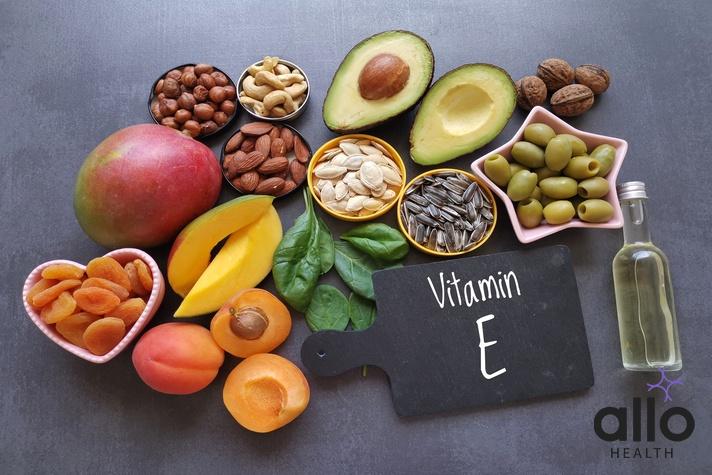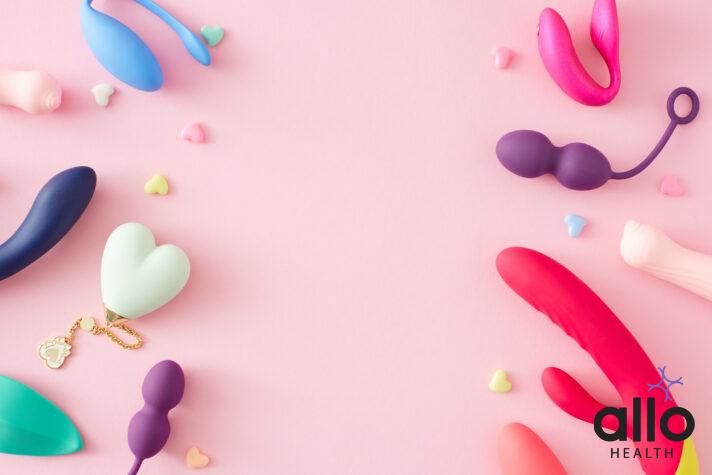What Does Female Ejaculation Taste Like?

Allo Health is dedicated to personalized well-being, offering support and trusted information tailored to individual health goals. The platform emphasizes human-generated content, led by a distinguished medical team of experts, including physicians and sexual health specialists. Their commitment to credibility involves rigorous fact-checking, authoritative research, and continuous updates to ensure accurate, up-to-date information. Allo Health's unique approach goes beyond conventional platforms, providing expert-led insights and a continuous commitment to excellence, with user feedback playing a crucial role in shaping the platform's authoritative voice.

Dr. Aditi completed her undergraduate medical education at AJIMS, Mangalore, after which she worked in multi-speciality hospitals with COVID patients and in the Pain and Palliative medicine department. Driven by her experiences, she developed a keen interest in psychiatry. Dr. Aditi believes that mental health is just as, if not more important, than physical health.
Why This Was Upated?
Our experts continually monitor the health and wellness space, and we update our articles when new information became available.
Updated on 19 June, 2024
- Article was updated as part of our commitment to diversity, equity, and inclusion.

"The following blog article provides general information and insights on various topics. However, it is important to note that the information presented is not intended as professional advice in any specific field or area. The content of this blog is for general educational and informational purposes only.
Book consultation
The content should not be interpreted as endorsement, recommendation, or guarantee of any product, service, or information mentioned. Readers are solely responsible for the decisions and actions they take based on the information provided in this blog. It is essential to exercise individual judgment, critical thinking, and personal responsibility when applying or implementing any information or suggestions discussed in the blog."
Female ejaculation, also known as “squirting”, is a natural phenomenon that is often surrounded by confusion and myths. The definition of pleasure is different for different people. One of the many questions people have about this bodily function is what does female ejaculation taste like.
Female ejaculation is not an indication of fulfilling sex lives or a benchmark accounting for pleasure. Many women enjoy their sex lives even without ever experiencing female ejaculation. Because orgasms in women are way more complex than in men. And unlike men, where ejaculation accounts for satisfaction, in women, there are various other factors and stimulations that are equally satisfactory. In this article, we will explore the science behind female ejaculation and its taste, including the factors that affect its taste, common descriptions of it, and how to improve its flavor.
What is Female Ejaculation
- Female ejaculation or “squirting” refers to the release of fluid from the female reproductive system during sexual arousal or orgasm. This whitish fluid, with a diluted milk-like consistency, is released from the urethra. The urethra is responsible for urine passage and is involved in this process.
- Ejaculation happens when fluid, distinct from urine, is released from your urethra during sexual arousal or orgasm. Some women expel this fluid during sexual/ G-spot stimulation and some expel it during orgasm. It can also be broadly categorized as a part of coital incontinence which means losing control of one’s bladder during sex. This falls under the umbrella term of Ejaculation Orgasm.
- This expulsion of fluid is different from the cervical fluid or vaginal fluid that provides vaginal lubrication when aroused or “wet.”

The Science Behind Female Ejaculation
Female ejaculation is the process of releasing a liquid that comes from various glands in the female genital area during sexual stimulation.
The fluid is believed to come from the Skene’s glands, also known as the female prostate. The female prostate gland can produce large amounts of fluid during orgasms, and sexual arousal. While the exact composition of female ejaculate is not fully understood, it contains several components, including glucose, fructose, prostatic acid phosphatase, and enzymes.
The volume of vaginal ejaculate can also vary greatly, ranging from a few drops to several ounces. Additionally, the release of female ejaculate is not always accompanied by an orgasm, and some women may experience it without even realizing it. Despite the lack of understanding and research surrounding female ejaculation, it is a natural and normal bodily function that can bring pleasure and satisfaction to those who experience it.
Understanding the Composition of Female Ejaculate
Understanding the precise composition of female ejaculate remains a subject of ongoing scientific investigation. The fluid’s source, its distinct nature from urine, and the variation in its components among individuals contribute to the complexity of understanding its composition fully. However certain components include:
- Prostatic-Specific Antigen (PSA): Some research suggests the presence of PSA in female ejaculate. This enzyme is also found in male semen and is produced by the Skene’s glands, akin to the male prostate.
- Glucose and Fructose: Analysis of female ejaculatory fluid has detected glucose and fructose, sugars also present in male ejaculate. These sugars might contribute to its taste and consistency.
- Urea and Creatinine: It is believed that there is a presence of urea and creatinine which are the components of urine. However, the concentration of these substances can vary, and female ejaculate is not solely urine.
- Fluid from Skene’s Glands: Female ejaculate is believed to originate from the Skene’s glands (paraurethral glands), located near the urethra. These glands produce fluid that’s distinct from vaginal lubrication but can contribute to the ejaculatory fluid.
- Variability in Composition: The composition of female ejaculate can differ among individuals and even within the same person on different occasions. This variability might explain the diverse experiences and characteristics reported by people who experience female ejaculation with orgasm.
Common Descriptions of What Does Female Ejaculation Taste Like?
Descriptions of the taste of female ejaculation can vary widely among individuals, and it’s important to note that taste is subjective. Some common descriptions or perceptions regarding the taste of female ejaculatory fluid include:
- Sweet or Mildly Sweet: Some individuals describe the taste as slightly sweet or having a mild sweetness similar to certain fruits. This perception might be influenced by diet and hydration levels.
- Slightly Salty: Others may perceive a subtle saltiness in the taste of female ejaculation. This taste might be more pronounced in some cases, depending on an individual’s body chemistry.
- Neutral or Tasteless: Some people report a relatively neutral taste or no discernible taste at all. Factors such as diet, hydration, and individual body chemistry can contribute to this perception.
- Bitter or Acrid: In some instances, individuals might describe the taste as bitter or having an acrid quality. This perception might be linked to specific dietary habits or health conditions.
- Varied or Complex Tastes: Female ejaculation can exhibit a range of tastes that can vary from person to person and even differ during different episodes of arousal or sexual experiences.
It is important to remember that taste is subjective, and what one person finds unpleasant, another may enjoy.
Factors That Affect the Taste of Female Ejaculation

As previously mentioned, several factors can influence the taste of female ejaculate.
Some of the factors that might affect the taste of female ejaculate include:
- Diet: What you eat and drink can impact bodily fluids’ taste, including female ejaculatory fluid. Foods like fruits, particularly pineapple and citrus fruits, might contribute to a sweeter taste, whereas strong or pungent foods (e.g., onions, garlic) may impart a more pronounced taste or strong odor.
- Hydration Levels: Staying hydrated can influence the taste of bodily fluids. Being adequately hydrated might result in a milder or less concentrated taste.
- Overall Health: General health and wellness, including hormonal balance and individual body chemistry, might affect the taste of female ejaculate. Increased acidic levels in the body can lead to a bitter taste or metallic taste in the ejaculate.
- Substances Consumed: General health issues along with habits like smoking, alcohol consumption, or the intake of caffeine or certain medications can potentially alter the taste of bodily fluids, including ejaculate.
- Individual Variations: Each person’s body chemistry is unique, which means the taste of female ejaculation can vary widely among individuals.
It is important to note that the taste of female ejaculate can also vary from person to person. Each individual has a unique body chemistry that can affect the taste and smell of female ejaculate or body fluids. Additionally, factors such as menstrual cycle and overall health can also impact the taste of female ejaculate. It is important to communicate with sexual partners about preferences and to prioritize safe and consensual sexual practices.
How to Improve the Taste of Female Ejaculation
If you or your partner are interested in improving the taste of female ejaculate, there are several things you can do.
- One of the simplest is to adjust your diet. Eating more sweet or neutral-tasting foods and drinking plenty of water can help improve the taste of bodily fluids.
- It can be helpful to avoid strong-smelling or pungent foods, such as garlic and coffee, which can make fluids taste more bitter.
- Drinking pineapple juice or eating pineapple in its natural form has also been said to improve the taste of bodily fluids.
- Another way to improve the taste of female ejaculate is to practice good hygiene.
- Regularly washing the genital area with mild soap and water can help reduce any unpleasant odors or tastes.
- Additionally, using flavored lubricants or female arousal gels during sexual activity can also enhance the taste of bodily fluids and enhance your sexual experience by helping you achieve ejaculation.
It’s also important to communicate with your partner about their preferences and comfort levels. Some people may not be comfortable with certain dietary adjustments or flavored lubricants, so it’s important to have an open and honest conversation about what works best for both partners.
Debunking Myths About the Taste of Female Ejaculation

There are many myths and misconceptions surrounding female ejaculation, read on to debunk some of them:
Myth: Female Ejaculate Always Tastes Like Urine:
Fact: Female ejaculate is not solely urine. While it might contain trace elements found in urine, it’s a separate fluid produced by the Skene’s glands near the urethra. Its taste is not necessarily identical to urine.
Myth: Female Ejaculation Always Tastes Unpleasant:
Fact: Taste perception is subjective. Female ejaculate can vary widely in taste among individuals. Some may find it tasteless or mildly sweet, while others may perceive it differently based on factors like diet, hydration, and body chemistry.
Myth: Drinking Certain Substances Will Change the Taste of Female Ejaculate:
Fact: While diet can influence bodily fluids’ taste, no specific substance guarantees a drastic or immediate change in the taste of female ejaculate. Individual variations and complexities affect taste more than simple dietary adjustments.
Myth: Female Ejaculation Always Tastes Identical for Everyone:
Fact: Taste perception is highly individualized. What one person perceives as sweet or neutral might differ significantly from another’s experience. There’s no universal taste for female ejaculate.
Myth: Female Ejaculate Tastes Unhealthy or Unhygienic:
Fact: Female ejaculate is a natural bodily fluid associated with sexual arousal and orgasm. Its taste is not indicative of health or hygiene but can vary based on numerous factors unique to each individual.
CONCLUSION
Female ejaculation, known as squirting, is a natural occurrence during sexual arousal or orgasm. It’s not a standard for sexual satisfaction in women. Taste varies—sweet, salty, neutral, or bitter—due to diet, hydration, and hygiene.
Improving taste may involve dietary changes, staying hydrated, and good hygiene. Communication is vital for mutual comfort and preferences. Remember, sexual pleasure goes beyond bodily fluids and is about holistic experiences and mutual respect. Exploring various forms of intimacy and pleasure contributes to fulfilling sexual encounters.
FREQUENTLY ASKED QUESTIONS (FAQ)
Q: What factors influence the taste of female ejaculation?
Answer: Various factors such as diet, hydration levels, overall health, and individual body chemistry can influence the taste of female ejaculate.
Q: Is the taste of female ejaculation the same for everyone?
Answer: No, the taste can vary significantly among individuals. It’s subjective and can range from sweet to slightly salty or have no discernible taste.
Q: Can diet affect the taste of female ejaculate?
Answer: Yes, diet plays a role. Consuming certain foods like fruits (such as pineapple), and vegetables, or staying hydrated might impact the taste, making it sweeter or milder.
Q: Does the taste of female ejaculation change over time or with health changes?
Answer: Yes, changes in diet, overall health, or hormonal variations can potentially alter the taste of female ejaculate over time.
Q: Are there methods to change or improve the taste of female ejaculation?
Answer: Some individuals believe that maintaining a healthy diet, drinking plenty of water, and avoiding substances like alcohol and caffeine might positively impact the taste. However, individual experiences may vary.






































